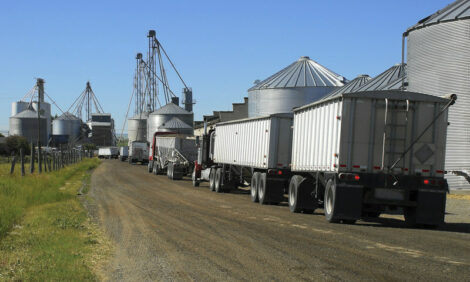



Will the tide turn for Hog Producers?
WEST LAFAYETTE, Ind. - Agricultural commodity prices have generally been very strong this year. Cattle prices are at record highs. Corn, soybean, and wheat prices are sharply higher than their past five year averages.
|
Broiler prices are over ten percent higher than last year's price and egg prices are up over 25 percent. Even lamb prices are nearly $20 per hundred higher than last year. Why have hog prices been forgotten in this period of farm price bullishness?
The answer may be very complex and related to what seems to be a general tendency toward overall lower hog prices since about 1997. In fact, since 1998, live hog prices have averaged only $38.56, which is by far the lowest level for any 6 year period during the post inflation period of the early 1970's. In contrast, the six year average price for the years ending in 1985, 1990, and 1995 were $46.88, $48.25, and $45.43.
The obvious reason is the industrialization of the industry which may have driven costs down. In addition, this "Wal Marting" of the industry has collapsed profits to the thinnest of margins, which means that only those with large volumes can generate a reasonable annual family income. But there are other worries as well. The seeming inelasticity of supply is one. This simply means that producers have become very hesitant to reduce production even in the face of apparent large losses. Another concern is that some production companies negotiated marketing contracts that provided them with prices substantially higher prices than market averages over these depressed price years. NAFTA may be a culprit as well. U.S. producers were slow to recognize that Canada would be a major hog growth area, sending an additional 4 million hogs to the U.S. per year since 1997. This left no room for U.S. producers to gain domestic and export market growth. And now, the era of cheap feed prices may have drawn to a close with tight world stocks of corn and wheat, and continuing uncertainty of how to get through this marketing year with a limitation on U.S. soybean supplies.
Alternatively, perhaps hogs are just late getting to the bullish price parade. The year of 2003 has had its surprises, especially in the form of much larger Canadian hog imports after the May 20 BSE cow discovery in Canada. It now appears that the U.S. will import one-half million more market hogs from Canada than had been expected.
There are positive signs that hogs may eventually make it to the parade. While hog production is going to be up by about one percent in 2003, live hog prices are going to also be up about 13 percent. Higher production and higher prices is a positive sign that demand may actually have improved. The primary demand enhancer is likely the record high retail beef prices that have comparison shoppers running to the pork section of the meat case. High retail beef prices will continue in 2004 and 2005 and will be an enhancement to pork demand and hog prices. Rising U.S. and world incomes should add to pork demand for the coming year as well.
Canadian production has been surging to the U.S. in the past five years, especially in the form of SEW pigs, which have increased by four million head since 1997. The incentive to have sows in Canada and ship pigs to the U.S. for finishing was enhanced by the surging value of the U.S. dollar in the 1997 to 2002 time period. However, the tide has turned in the past year as the U.S. dollar has dropped about 19 percent relative to the Canadian dollar. While this will not immediately divert the flow of SEW pigs since most are on long-term contracts, it greatly reduces the incentive to sign new or to renew old contracts. Finally, Canadian beef is slowly being allowed to come into the U.S. and these volumes should expand in 2004. This will mean that Canadian consumer will consumer more pork and export less to the U.S. in 2004.
Overall, there are a number of fundamentals, especially on the demand side, that may be building the case for a bullish price run for hogs sometime next year. The final major factor, however, is supply, and at this point there is little indication that U.S. producers intend to cut back even in the face of losses occurring over 40 percent of the time during the 1998 to 2003 time period. At this point it appears that pork production could rise modestly again next year, setting new high production records. If so, only modest improvement in hog prices can be expected, moving from a live price of about $39 this year to around $41 next year. Critical to supply prospects will be the information provided in the USDA December Hogs and Pigs report to be released on December 30.

Source: FarmDoc. Issued by Chris Hurt, Extension Economist, Purdue University - 1st December 2003













